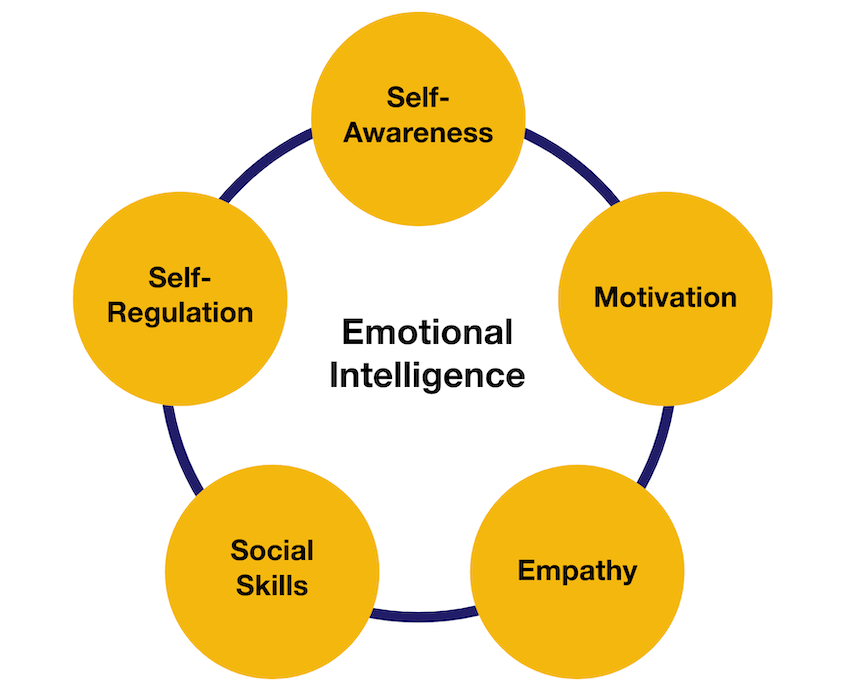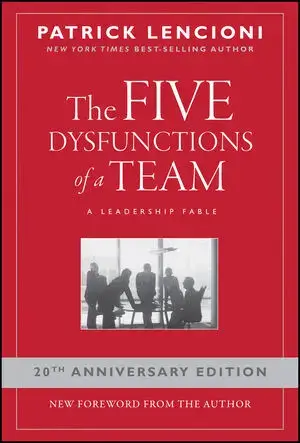Visionary leadership is a style of leadership that involves guiding others.
There are other leadership styles, but this one is arguably the most vital for today’s business leaders looking to create thriving organizations that achieve long-term success.
Let’s dive in …
What are Leadership Styles?
Various authors and researchers have documented different approaches to leadership in organizations and businesses.
For example, in “Leadership That Gets Results,” published in Harvard Business Review (2001), psychologist Daniel Goleman outlines six different leadership styles:
- The coercive style
- The authoritative style
- The affiliative style
- The democratic style
- The pacesetting style
- The coaching style
Instead of perceiving one’s leadership style as a fixed personality attribute, research suggests that outperforming leaders can adapt their leadership style to meet the demands and needs of the organization.
The context best determines one’s leadership style. That is, it should be a strategic choice.
Goleman is best known for popularizing the research on emotional intelligence. Each leadership style Goleman outlines uses competencies of emotional intelligence in different combinations.
The most effective leaders can fluidly switch or toggle between leadership styles based on the situation.
What is Visionary Leadership?
Visionary leadership is the style of leadership that Goleman classified as the “authoritative style.”
From Goleman:1Daniel Goleman, “Leadership That Gets Results.” Harvard Business Review, 2001.
An authoritative leader takes a “Come with me” approach: she states the overall goal but gives people the freedom to choose their own means of achieving it.
Visionary leaders have a compelling vision for their business and can see the potential in their leadership team.
They can see beyond the ambiguity and challenges of today to an empowering picture of tomorrow.
Visionary leaders impregnate their team and the organization itself with this vision. Fueled by inspiration, the organization can chart its course to this new future.
Visionary leaders, however, don’t seek control over their employees. Instead, they provide employees with the freedom to determine the best path to actualizing this vision.
When Does the Visionary Leadership Style Work Best
Remember that each leadership style is most effective in specific situations. An effective leader can assess the context and adjust their leadership style as needed.
Goleman’s team found that the visionary leadership style works best when a business is aimless and the organization is not dialed in on what needs to happen next.
However, this visionary leadership style is less effective when the leader is working with a team of people who are more experienced than he is.
According to Goleman’s research, of the six leadership styles they examined, visionary leadership (authoritative) is the most effective overall.
The late Steve Jobs was the epitome of this style. Jobs demonstrated most of the qualities highlighted below.
Why the Visionary Leadership Style is Important
Endless information inundates all of us. We live in a world of perpetual distractions.
How challenging is it to focus on a given task for a mere hour?
Now, consider the inherent challenges of maintaining a long-term perspective for years, particularly within a large organization.
Effective collaboration is essential for any group of people seeking to create something, bring it to market, and succeed in a competitive marketplace.
Visionary leaders have a unique ability to inspire their teams to rally around a shared vision.
This alignment helps each team member focus on clearly defined results. However, visionary leaders also create the space for team members to arrive at these results in their own ways. (They don’t micro-manage.)
This sense of autonomy, combined with a clear vision, often gives the team a competitive advantage.
12 Qualities of Visionary Leadership
Having worked with high-performing CEOs and entrepreneurs for over 25 years, I had the opportunity to witness this visionary leadership style in action.
Here are 12 hallmark traits of visionary leaders:
1 – Inspirational
What does inspirational mean? It means that visionary leaders tap into their team’s emotions. Their enthusiasm is infectious.
Visionary leaders ignite people’s passions. They drive positive emotions in the right direction to bring out the best in their team members.
2- Emotionally Intelligent
To inspire consistency, a leader must be aware of their own emotions and be empathetic (aware of the feelings of others).
Only through empathy can a leader connect with the hearts of their team and inspire them to realize their greatness.
3 – Flexible
Although visionaries hold a big picture in mind, they remain flexible in their approach to achieving it. They give their team members an open runway to actualize the vision in their own ways.
As author Dan Pink highlights in his bestseller Drive, self-determination theory suggests that autonomy is a leading factor in employee motivation.
They are receptive to new information and can hold multiple perspectives. This open-mindedness enables them to navigate stressful situations with a flexible mindset, drawing on diverse resources and sometimes unrelated industries to arrive at creative solutions.
4 – Imaginative
Visionary leaders often exhibit a childlike playfulness. They value their imagination and allow themselves to dream, exercising their mind’s eye to see beyond what’s in the physical world at the moment.
They encourage others to dream big as well.
5 – Resolute
Social pressures have a lesser influence on visionary leaders than on most others. Their high conviction holds strong in the face of adversity.
Setbacks aren’t a sign of failure to them; they are mere stopping points on the way to realizing their vision. As such, they are willing to take calculated risks and endure uncertainty. They give assurance and clarity to others when facing difficulty.
6 – Persistent
Obstacles are constant. Realizing the vision will not be easy.
With inner resolve, visionary leaders push through difficulties and setbacks. They remain agile enough to pivot and make course corrections, but they always persist.
7 – Collaborative
You can’t realize a business vision alone. It takes a talented team that can work together. Visionary leaders inspire others to tap into their unique gifts and strengths, enabling them to innovate and find creative solutions.
They create an open environment where people learn to trust one another, and that trust begins with the leader. As author Patrick Lencioni highlighted in The Five Dysfunctions of a Team, trust is the bedrock of team building.
8 – Bold
There’s no place for timidity in the visionary leadership style. Visionaries are courageous and daring, willing to take calculated risks.
They tend to be more afraid of not pursuing their vision than of fearing failure. As a consequence, visionary leaders foster innovative organizations because their people are allowed to “fail quickly,” learn, adapt, and grow.
9 – Magnetic
Visionary leaders are inclusive, inviting others to make the vision their own. They attract talented individuals who are passionate about their work and inspired by the company’s big picture.
They create thriving, innovative cultures where individuals have the freedom to create their best work and take pride in their efforts. Visionary leaders bring out the best in their people.
10 – Optimistic
Visionary leaders hold a positive outlook for the future. They are hopeful they will achieve success. They don’t view problems as personal, permanent, or pervasive. Instead, they are impersonal, temporary, and relate only to the present situation.
These leaders are driven to create more value but are content where they are now. Their optimism is infectious throughout the organization. It’s a sturdy anchor when setbacks occur.
11 – Disciplined
Visionary leaders hold to a compelling vision. It takes discipline to hold the end picture in mind amidst challenges, setbacks, and changing market conditions. This is one of Stephen Covey’s Seven Habits of Highly Effective People.
It takes commitment to work towards this vision every day and to keep it alive in the minds of the team.
12 – Motivating
As Goleman notes, a visionary leader “motivates people by making clear to them how their work fits into a larger vision for the organization.” Their team members understand that their role in the organization matters and why.
The Visionary Leadership Style Raises the Standard
Ultimately, the reason why the visionary leadership style is so effective is that it continuously raises the standards of everyone in the company.
How? By couching everything the team members do within the context of a grand vision.
Doing so helps maximize everyone’s commitment to the organization’s goals and overall strategy.
The visionary leader makes the standards of success clear to all. That is, this leadership style is transparent, which helps cultivate trust.
Visionary leaders provide performance feedback based on whether or not the individual’s performance supports progress toward the vision.
How to Embody a Visionary Leadership Style
Although this visionary leadership style may come more naturally to some, it remains just a style of leadership. That is, it’s a set pattern of behavior that anyone can adopt.
This means that everyone can access this powerful style of leadership.
How can you access more of this visionary leadership style in your organization?
- Start by reviewing the 12 qualities listed above.
- Reflect on any one of them for a minute or two.
- Let your mind find ways to bring this quality to life in your behavior and mindset right now.
- Visualize yourself embodying this visionary leadership trait.
- Notice how it feels within yourself. In your mind’s eye, see how those around you respond to you.
- Hold this feeling and gently smile. Acknowledge the presence of this attribute within yourself.
Then, act as if you are a visionary. Make it a reality right now. Repeat this process often.
Building Your Emotional Intelligence Skillset
Ultimately, to be an effective visionary leader and be able to toggle between the other leadership styles requires the cultivation of emotional intelligence.
The five pillars of emotional intelligence are:
- Self-awareness: the ability to understand one’s internal terrain, including thoughts and feelings.
- Self-regulation: the ability to manage emotions, impulses, and moods.
- Empathy: the ability to understand the emotional makeup of others and treat them accordingly.
- Social skills: the ability to find common ground with others, build rapport, and manage relationships.
- Motivation: the ability to pursue goals for internal reasons (beyond money) with energy and persistence.
Each of these pillars represents skills that can be developed and improved upon.
As Goleman highlights in “What Makes a Leader?” (Harvard Business Review, 1998), the distinguishing factor of outperforming leaders is not IQ, but emotional intelligence.
Refer to the links below for comprehensive guides that delve more deeply into this topic.
How to Be a Visionary Leader
Visionary leadership begins with a clear vision for your organization or team. Focus first on clarifying that compelling vision.
- Determine a clear vision for your organization or team.
- Meet with your team to discuss this vision, to get feedback, and buy-in.
- Set parameters to enable your leadership to drive towards aspects of this vision related to their department.
- Manage progress weekly.
- Provide performance feedback based on whether or not the team member is making progress toward the larger vision.
Be flexible. Allow your team members space to devise methods to realize the vision.
Books That Can Help You Unlock Visionary Leadership
The following reading list will help you unlock various aspects of the visionary leadership style:
The Leadership Challenge
by James Kouzes and Barry Posner
The Five Dysfunctions of a Team
by Patrick Lencioni
The 7 Habits of Highly Effective People
by Stephen Covey
Start With Why
by Simon Sinek
Read Next
How to Cultivate Self-Leadership to Realize Your Potential
15 Best Psychology Books on Human Behavior
A Definitive Guide to Intrapersonal Intelligence
12 Brand Archetypes: How to Apply Archetypal Psychology to Marketing





